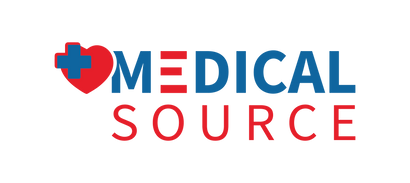Healthcare professionals rely on personal protective equipment every single day to protect themselves and their patients from the spread of germs and infectious diseases. But now, with the coronavirus pandemic spreading like wildfire, PPE is more important than ever.
Now, healthcare professionals are seeing the real risk of failure to use PPE, rather than discussing risk as a hypothetical worst-case scenario. Healthcare workers are now the most at-risk population for coronavirus simply because they see so many infected patients.
Worse, when healthcare workers do get sick, their constant exposure to sick patients means that their viral load will be much higher than the average person and they face a far greater risk of incapacitating or fatal infections.
In light of the current dangers, we’re taking a closer look at PPE – coronavirus edition. Here are some of the most essential forms of PPE and what they do to protect your workers during the pandemic.
Face Masks
The key feature of the coronavirus is respiratory systems, such as dry coughing, and it spreads primarily through saliva droplets or discharge from the nose when an infected person coughs or sneezes. This is why masks (and even custom plexiglass droplet guards are essential – for the infected and those around them.
While it does help to cover your cough or sneeze and face away from others, covering your mouth with your elbow or sleeve does not fully contain saliva droplets flung into the air. A face mask keeps saliva and discharge completely contained, protecting those around you.
In addition, face masks protect healthy individuals by preventing them from breathing in saliva droplets of an infected person.
The most efficient and effective masks are N95 Respirators, which must be fitted to the individual wearer. These are also difficult to acquire at the moment because they’re in high demand, and should only be worn by medical personnel. The same goes for surgical masks, which must now go through decontamination to be reused because of severe shortages.
To help conserve resources for medical personnel, non-medical workers should wear cloth face masks.
Gloves
According to the National Institutes of Health, coronavirus can stay stable on surfaces for several hours, similar to the original SARS virus. On plastic and stainless steel, for example, scientists found viable traces of COVID-19 two to three days after exposure. And because coronavirus is a virus (and thus isn’t exactly alive) you cannot necessarily kill the virus by disinfecting surfaces the way you would kill germs.
Safety gloves are critical PPE because they prevent your hands from being exposed to the virus on surfaces. We use our hands for everything, and because the virus can live without a host for quite some time, it’s astonishingly easy to spread the virus via touch.
Granted, touching someone with infected gloves is no better than touching them with your bare hands, but gloves do protect the wearer from exposure – as long as you remove and dispose of them properly.
Understanding PPE for the Coronavirus
We understand that this is a difficult time for many workers, especially healthcare providers. We hope to be a safety resource during this period. Share this PPE – coronavirus guide with your workers as part of safety training.
